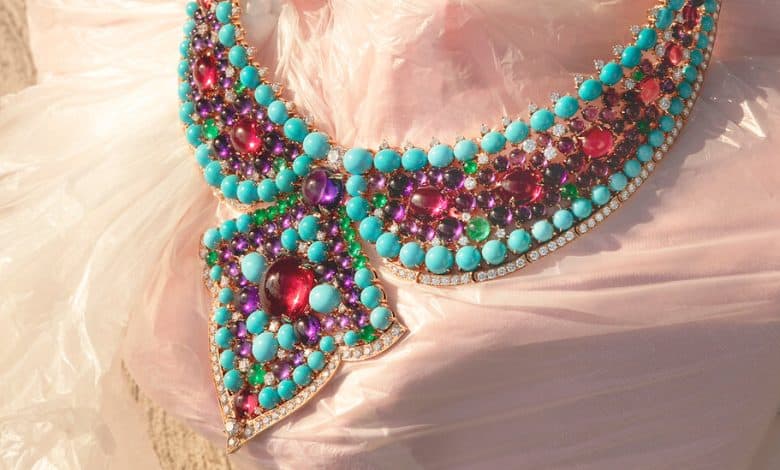Jewelry Fit for a 1960s It Girl

Born in 1857 into a family of silversmiths in Kalarites, Greece, Sotirios Boulgaris relocated to Rome at age 24 and, three years later, set up a boutique not far from the Spanish Steps. In 1905, two decades after founding Bulgari, its name an Italianized variant of Boulgaris, he opened a larger store, the Old Curiosity Shop (a reference to a Charles Dickens novel), on Via dei Condotti, where he sold glass perfume bottles, Byzantine silver artifacts and neo-Hellenic objects. When his sons Giorgio and Constantino inherited the family business after their father’s death in 1932, they expanded into high jewelry, playing with Art Deco accents and geometric motifs. By the 1950s, the house of Bulgari was already famous for its eye-catching mix of precious and multicolored stones. Influenced by the cupolas on basilicas across Rome, the brand’s trademark vibrant cabochons — smooth, rounded stones that don’t refract light the way faceted gems do — became ubiquitous. A yellow gold bib necklace from 1968, with its emeralds, amethysts and turquoise stones, epitomized the daring chromatic combinations of the era and was worn by the Upper East Side It girl Lyn Revson, the wife of the cosmetics magnate Charles Revson, a co-founder of Revlon.

The socialite Lyn Revson (right), photographed with the actress Carol Channing in 1977, wearing a 1968 yellow-gold necklace from the house.Credit…New York Post/Courtesy of Bulgari
Inspired by that archival piece, Bulgari’s new rose-gold Lotus Cabochon riffs on that experimental heritage. Shaped like a collar, the necklace conjures the petals of a lotus flower, a symbol of rebirth, while its bold color combinations add an unexpected sense of whimsy. Over 1,400 hours of handcrafted artistry were required to shape and set the intertwined jewels: pebble-like rubellites, Zambian emeralds, turquoise from Arizona and Brazilian amethyst cabochons. The result would make even the original patriarch proud.
